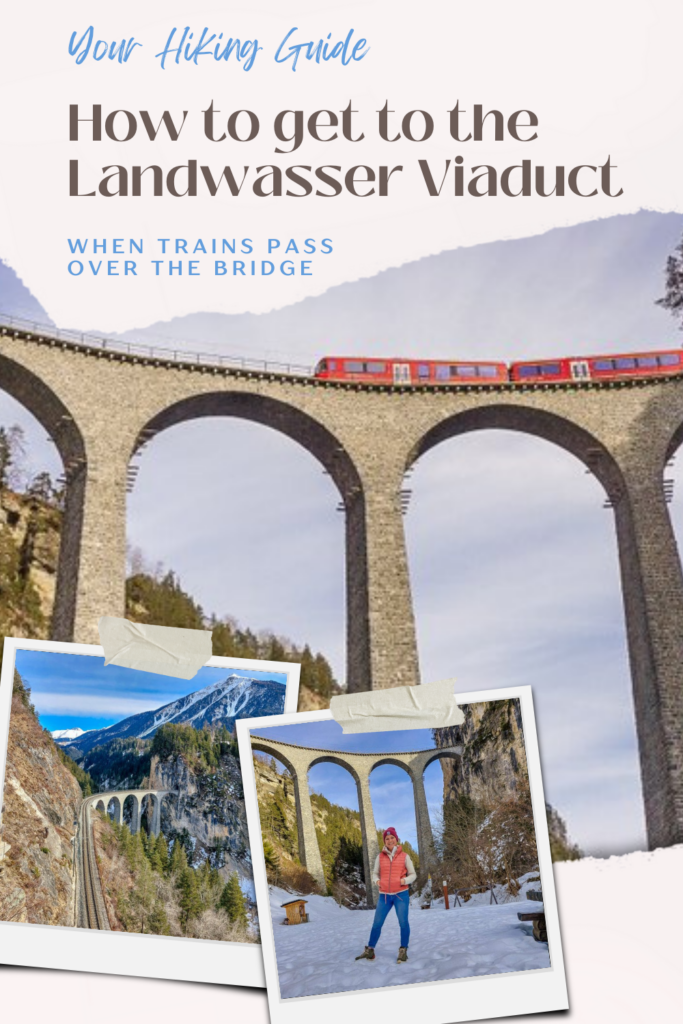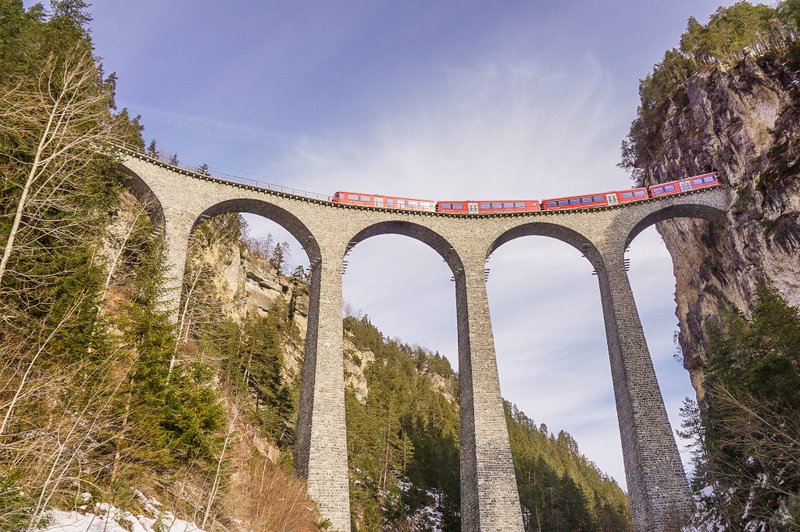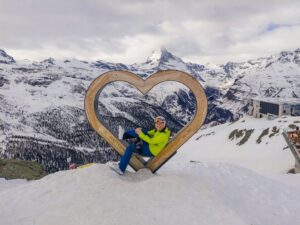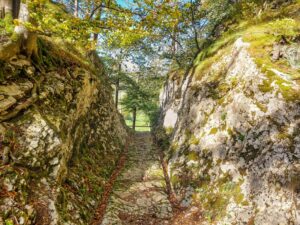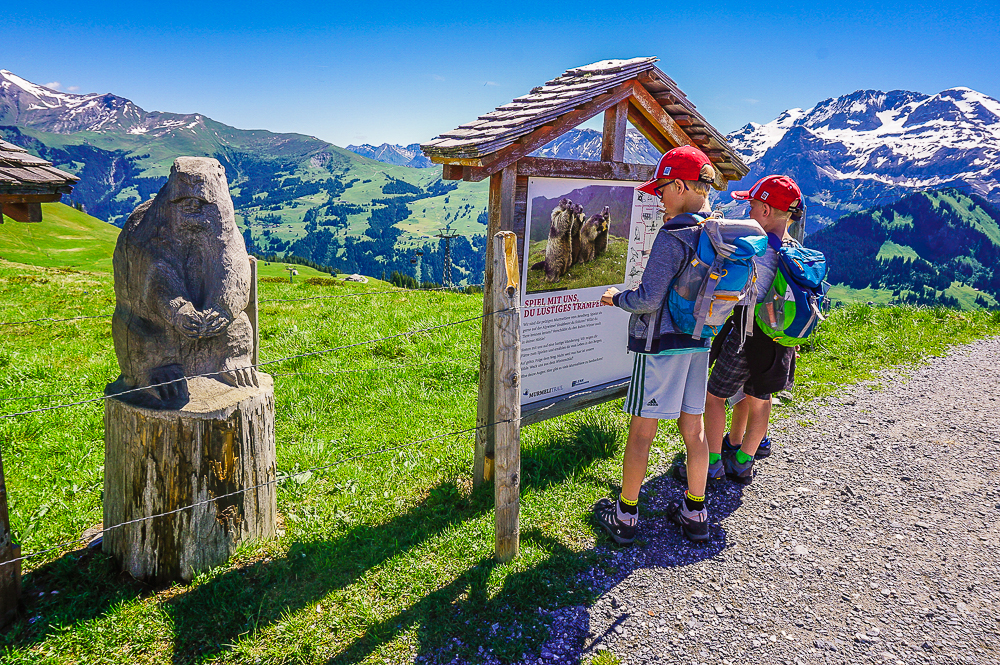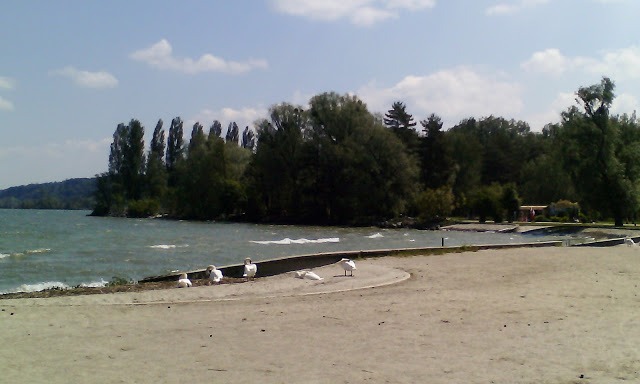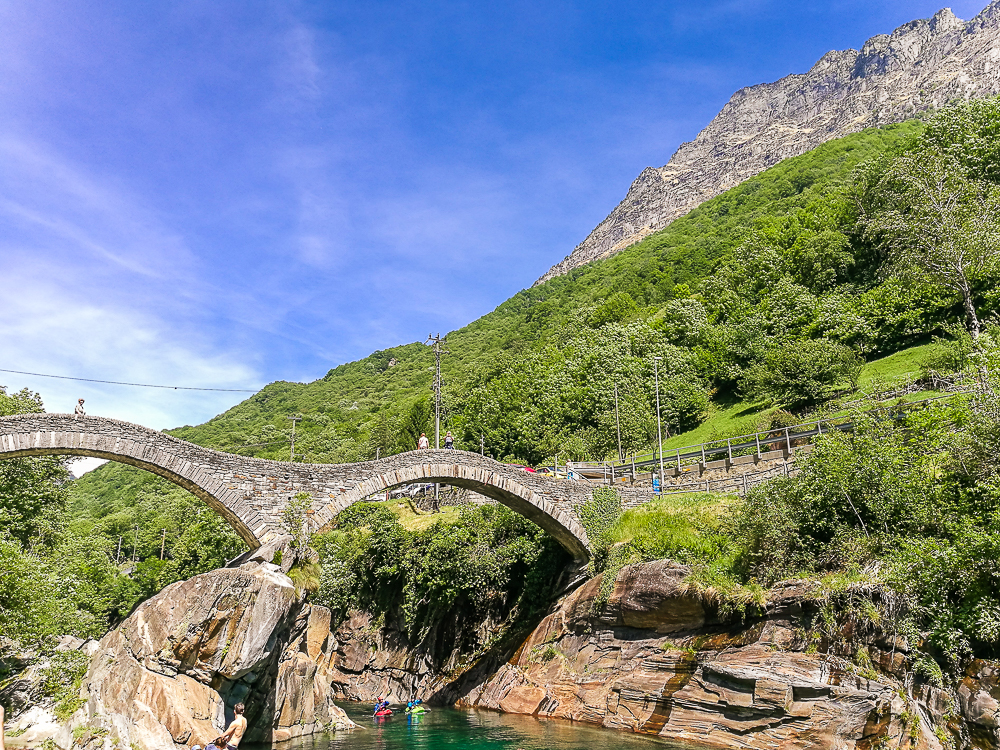I dare to say that the second most iconic picture from Switzerland after the Matterhorn is the red train coming out of the tunnel in the rock and crossing the high stone bridge. Yes, it’s a photographic and Instagram classic. That bridge is the Landwasser Viaduct (Landwasserviadukt), located on the Albulabahn railway line, which, along with it, is a UNESCO World Heritage Site. In today’s article, I will show you how you can not only ride over the Landwasserviadukt but also get to it and take iconic photos for your album (or social media 😉 ).
Albula Railway
The railway route is just over 61 km long and leads from Thusis (697 m a.s.l.) to the well-known winter resort of St. Moritz (1 775 m a.s.l.). Construction of the first section of the line began in 1898 and was completed five years later, in 1903. It is unique because the trains on this line can climb without cogs. They coped with the differences in altitude by building spiral tunnels in the rock or a circular viaduct. The line is operated by the Rhaetian Railway (RhB) and mainly connects the cantonal capital of Chur with St Moritz and the entire Engadin valley. In St Moritz, it meets the equally well-known Bernina railway, which runs to Tirano in Italy. These two railways have been jointly listed as UNESCO World Heritage Sites since 2008.
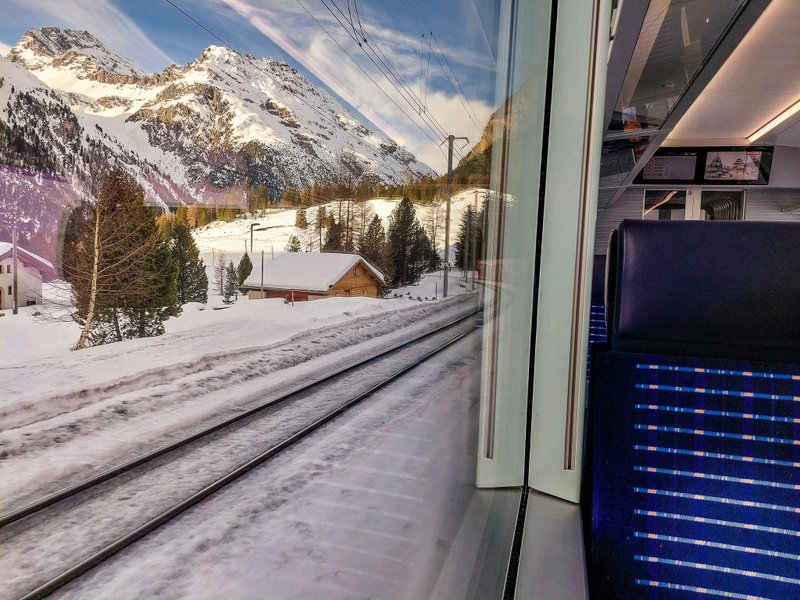
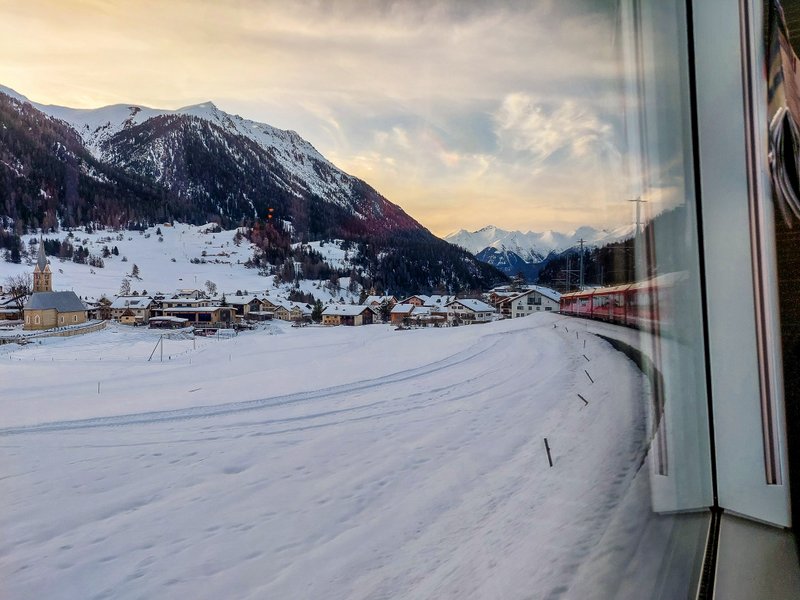
Preda – Bergün: tunnels and sledding
In the climb between Bergün and Preda, more than 400 meters of elevation had to be overcome in constructing the five kilometers of track. Two classic tunnels, three spiral tunnels, and a series of bridges accomplished this task by making the track gradually climb upwards in circular loops, which makes for an authentic experience. As well as twisting, this section of the track is also famous for the six kilometers of sledding that run along and underneath it. Sledding is also possible in the evening thanks to the track’s lighting, making it the longest-illuminated sledding track in Europe. So next time I come here in the winter, I must try it! And I don’t need to bring my sled with me, because I can book and rent it in advance. A full day’s sledding (which includes train crossings on the Preda – Begrün route) costs 42 CHF for an adult (30CHF with Halb-tax) and 21 CHF for children aged 6 to 15 (10 CHF with Junior-Karte). In Bergün, you can visit the museum of the Albulabahn railway line, a UNESCO World Heritage Site.
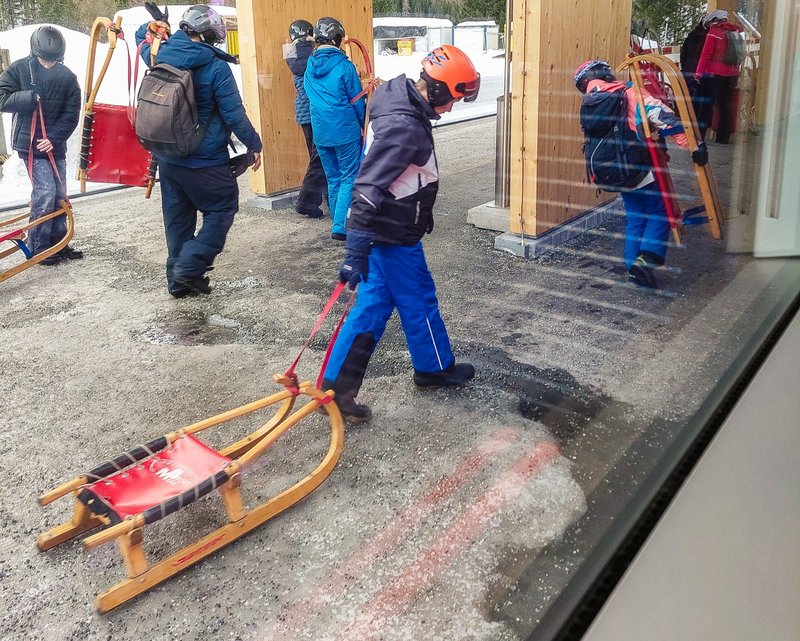
How to get to Landwasserviadukt
As I wrote before, the main attraction of the route is undoubtedly the famous Ladwasserviadukt. The viaduct is 136 meters long, and five limestone pillars support the six 20-meter arches. The bridge was completely renovated in 2009. You won’t enjoy it much when traveling on the train; you’ll appreciate its stunning beauty when standing right under it.
By train: get off at Filisur station and follow the tourist signs to it.
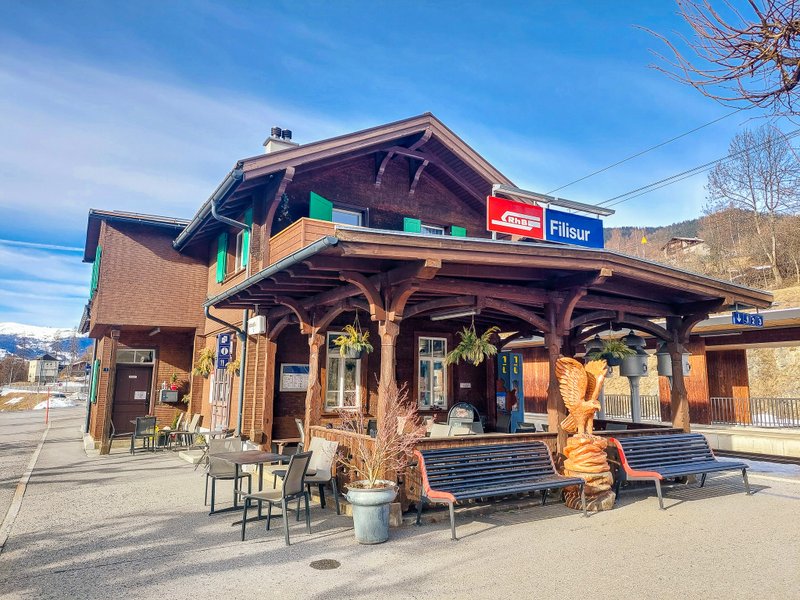
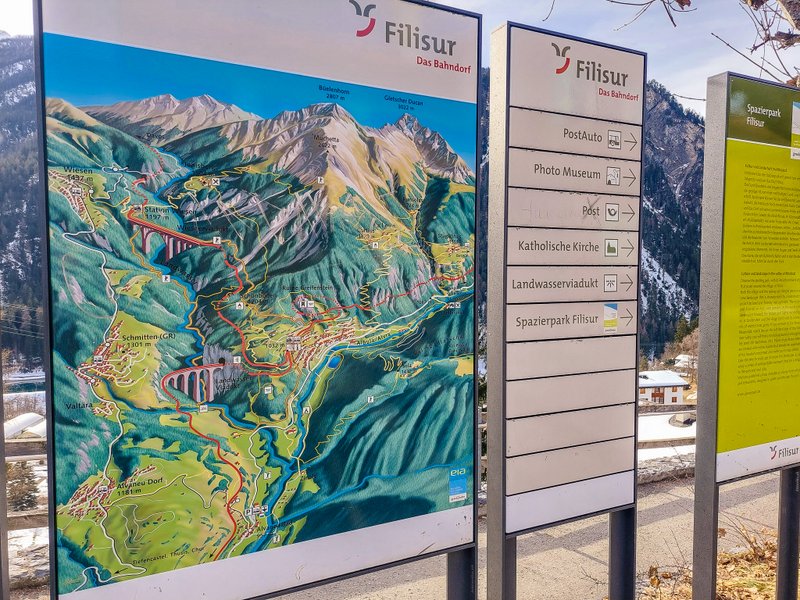
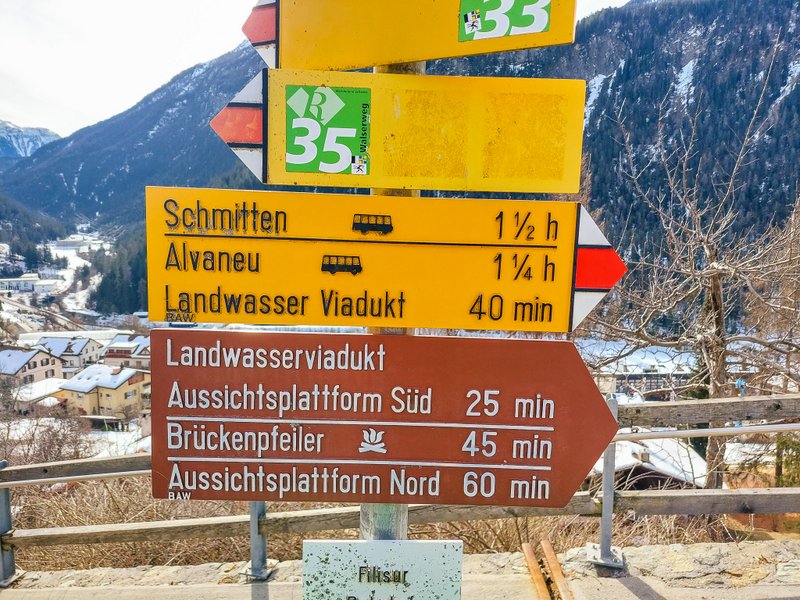
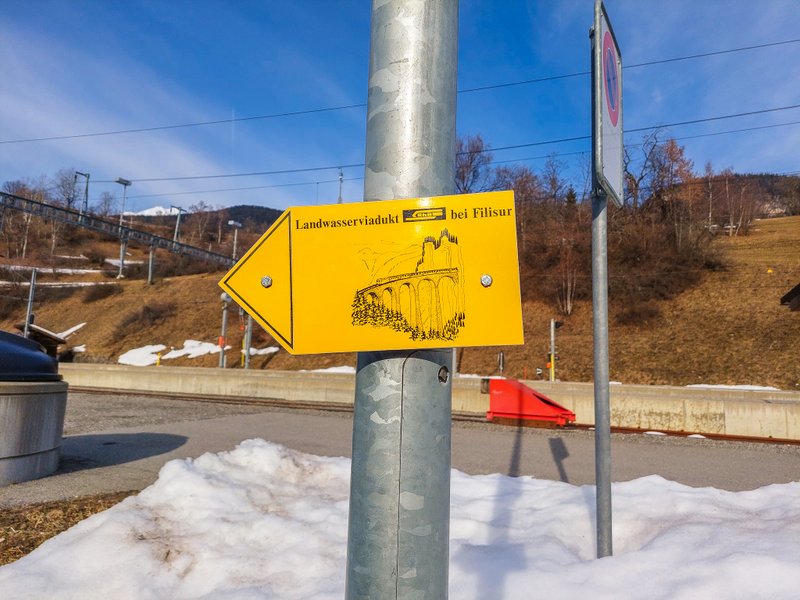
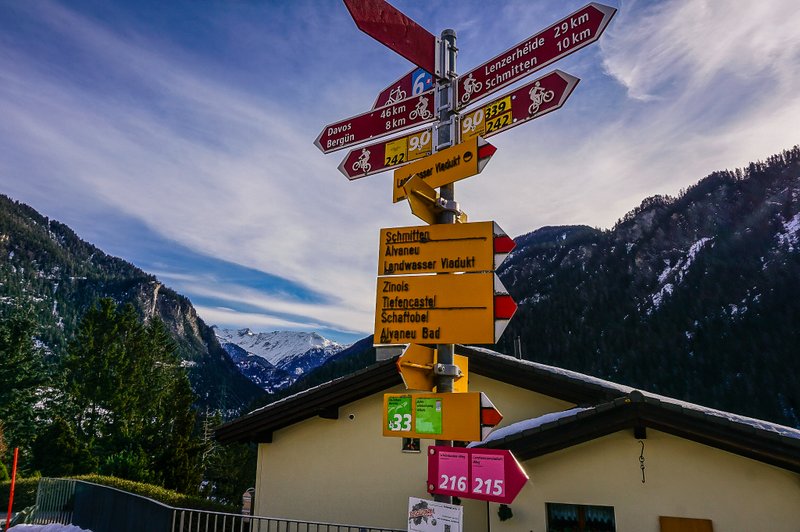
By car: enter Parkplatz Landwasserviadukt on the map. The parking lot is not large; be prepared that it may be completely full early in the season. From here, follow the straight gravel path along the river.
Viewpoint South
At first, I wanted to go to the south viewpoint because, according to the signpost, it was closer, but alas, there was a ban on the road due to logging. So I had to turn back.
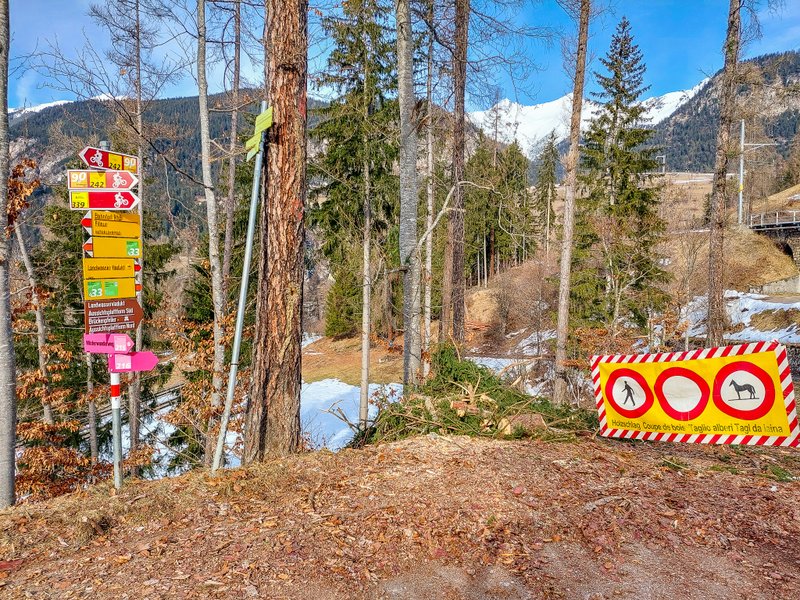
Viewpoint North
So, I returned to the nearest signpost and took the path to the left. It looks like a dead-end street that only leads to the houses in the picture, but it’s not. Just beyond them, the trail leads on. You can find the exact coordinates of the trail here. After about a kilometer, you’ll come to the aforementioned parking lot.
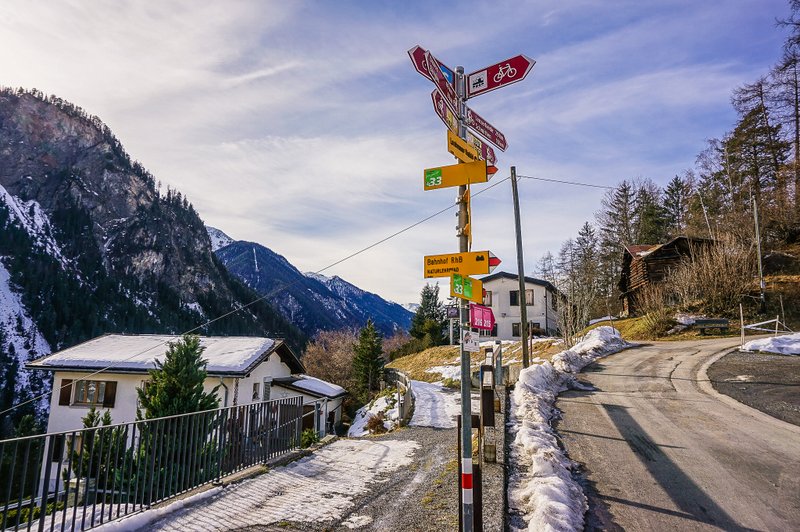
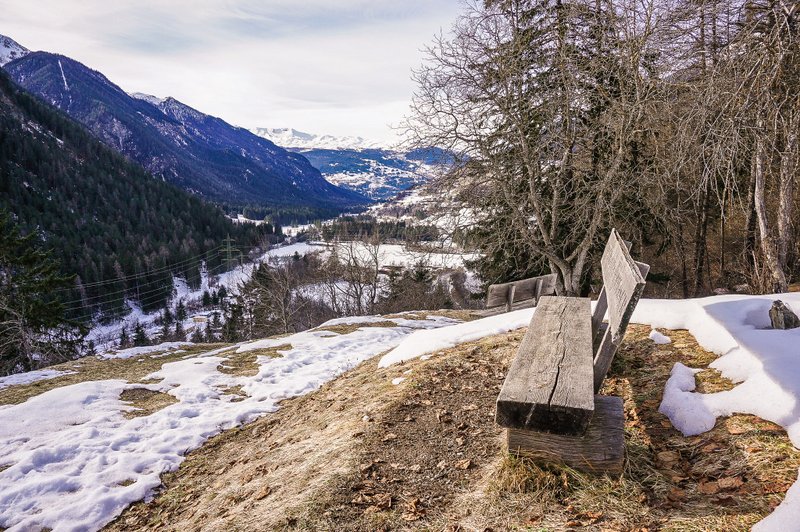
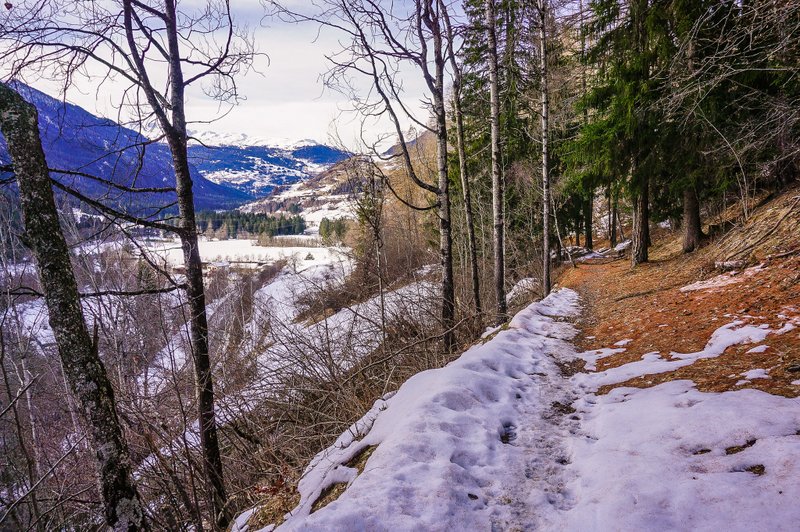
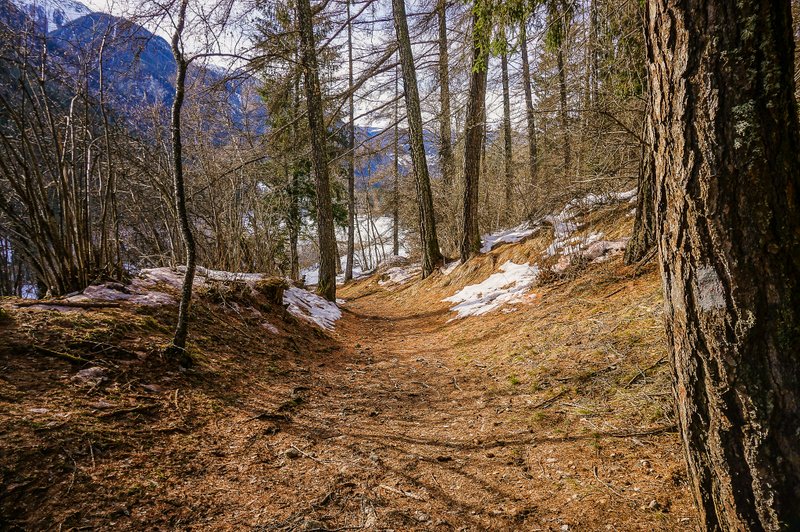
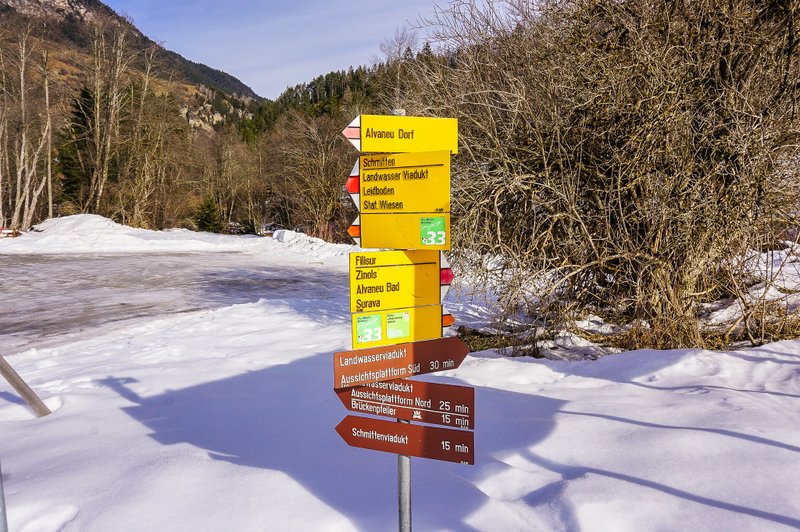
Follow the path along the river until you cross a bridge and find another signpost. Head left along a rather steep path that leads up through the woods past another small viaduct. Approach this, and in less than 5 minutes, you will reach a viewing platform.
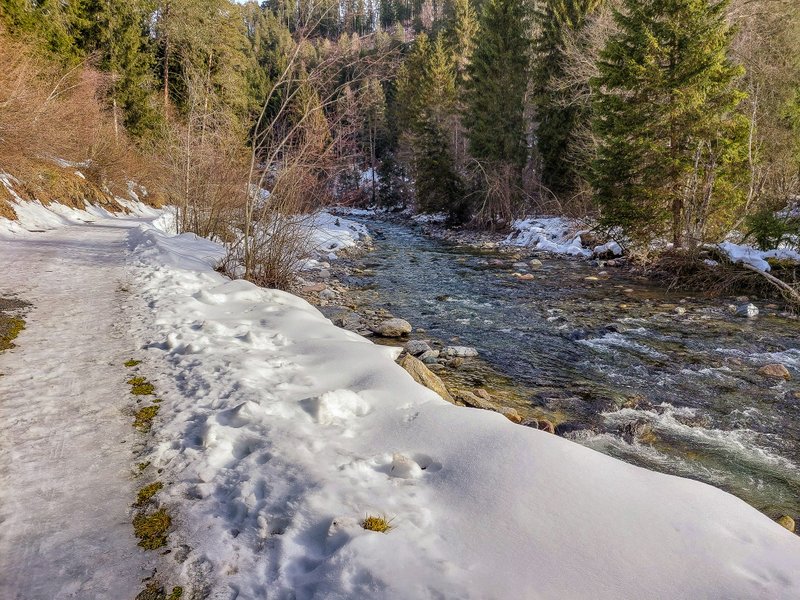
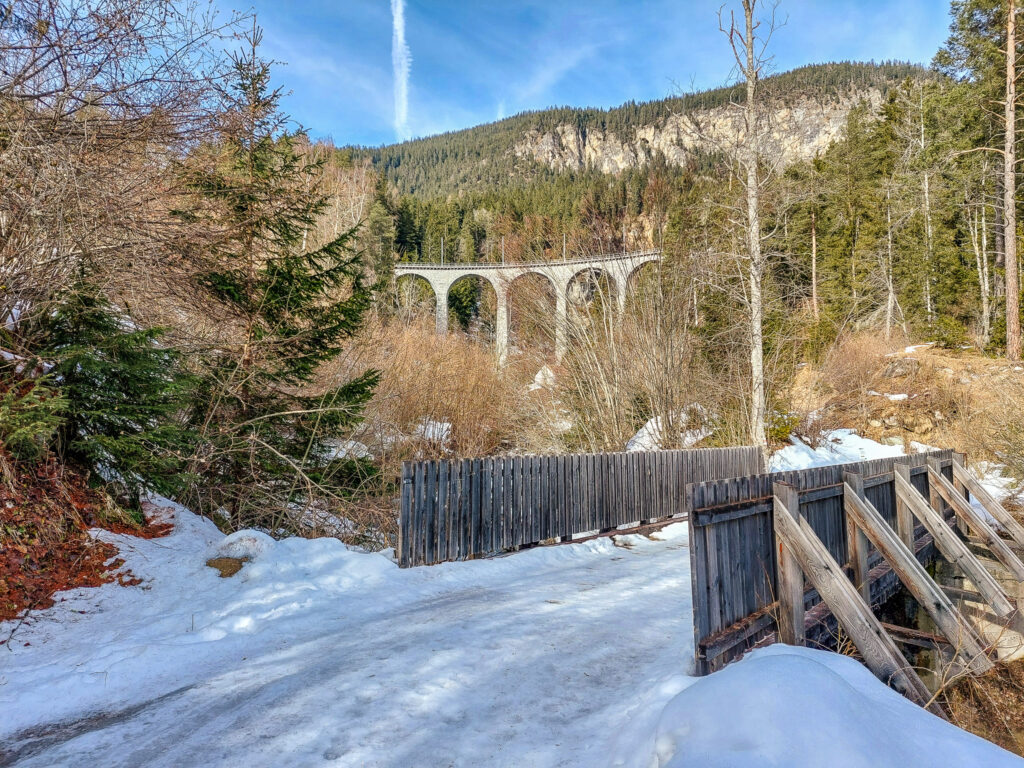
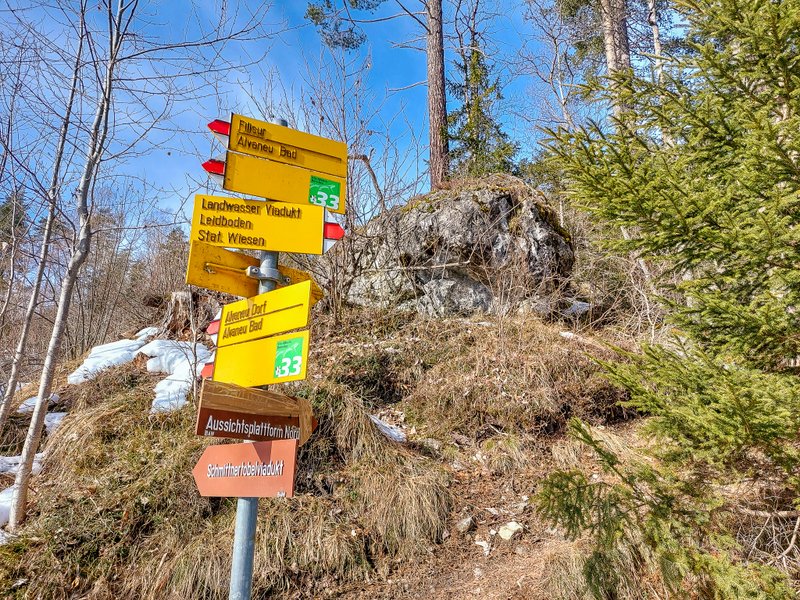
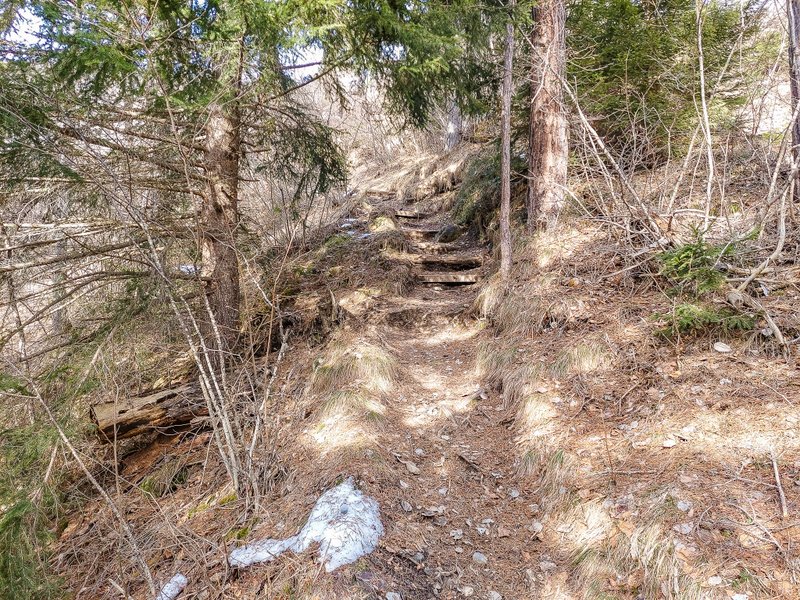
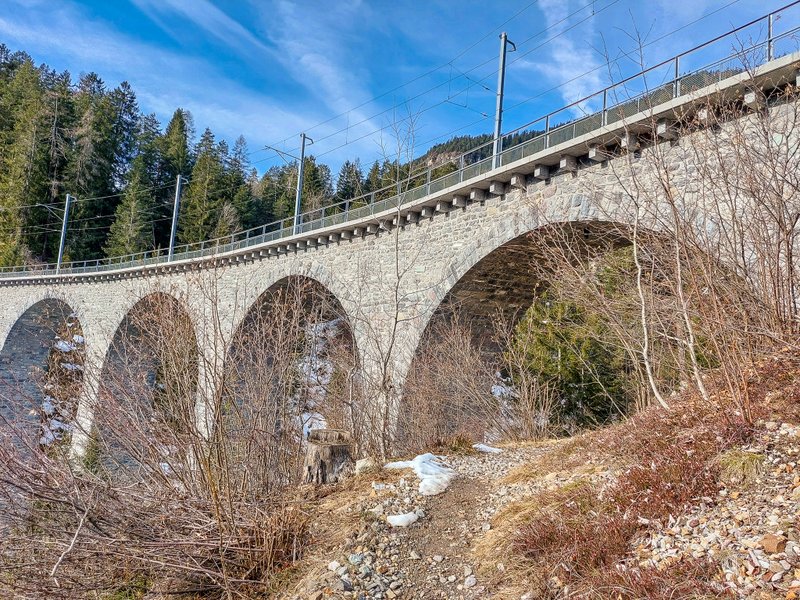
The viewing platform is relatively small, and I believe it gets pretty crowded in high season. But you can enjoy the view of the Landwasserviadukt in all its glory from here.
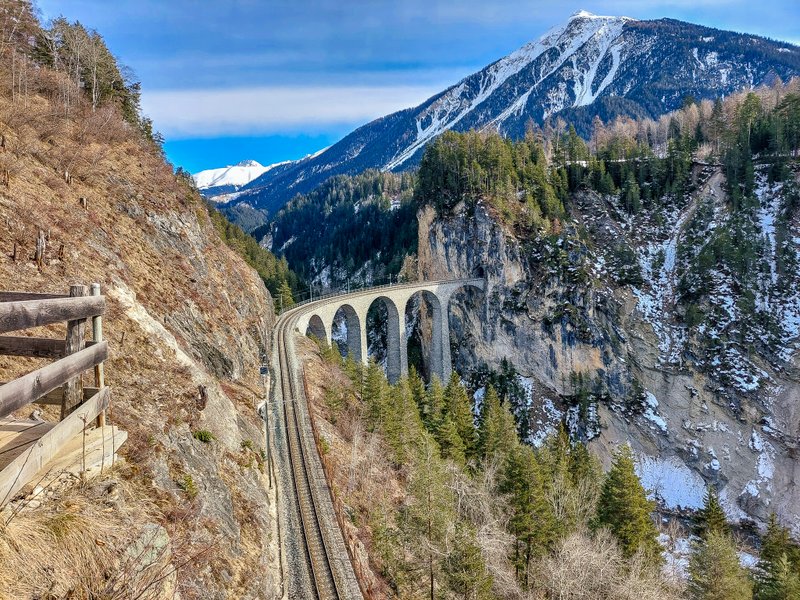
Underneath the viaduct
To get directly to the “foot” of the viaduct, you have to go down from the northern viewpoint back to the signpost and follow the wide gravel path. In less than 10 minutes, you will come to the viaduct. The lower viewpoint by the river will give you a completely different perspective, and it is here that you will fully experience how big this viaduct is.
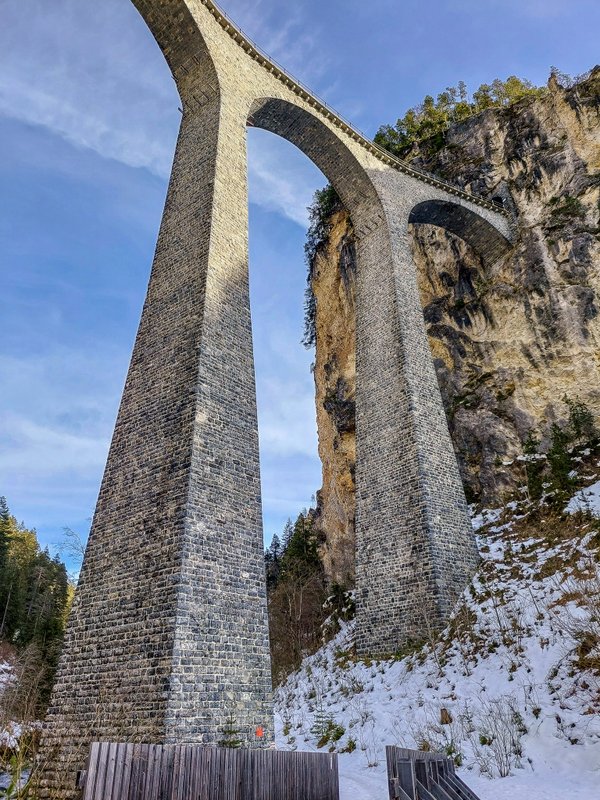
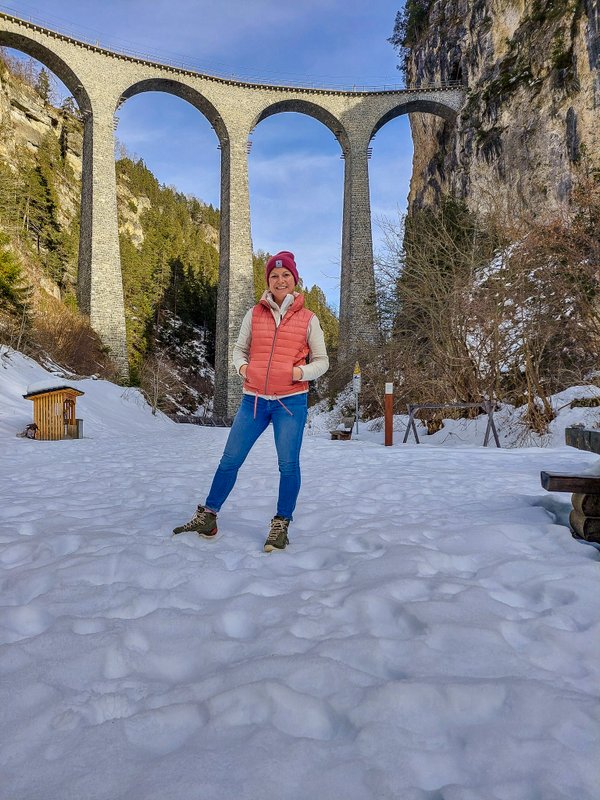
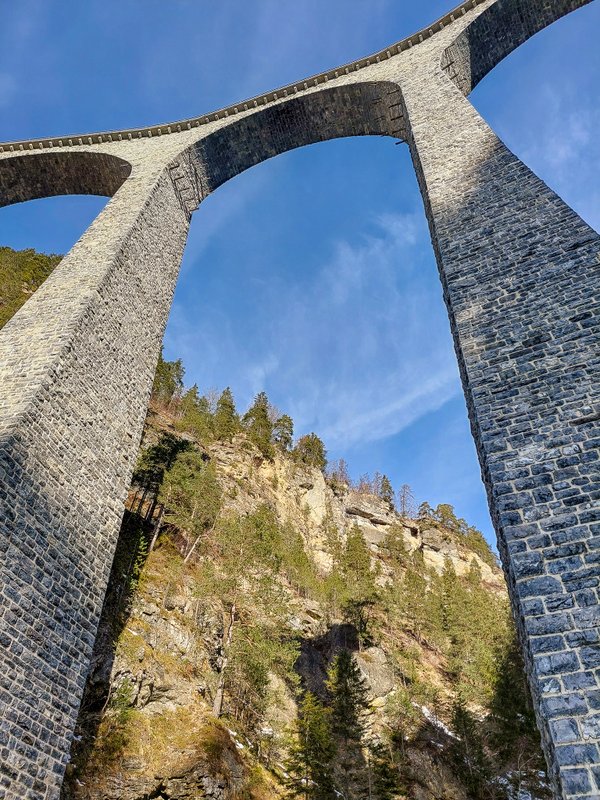
You can also have a picnic here; firewood is available. In the meantime, you can wait for the next red train.
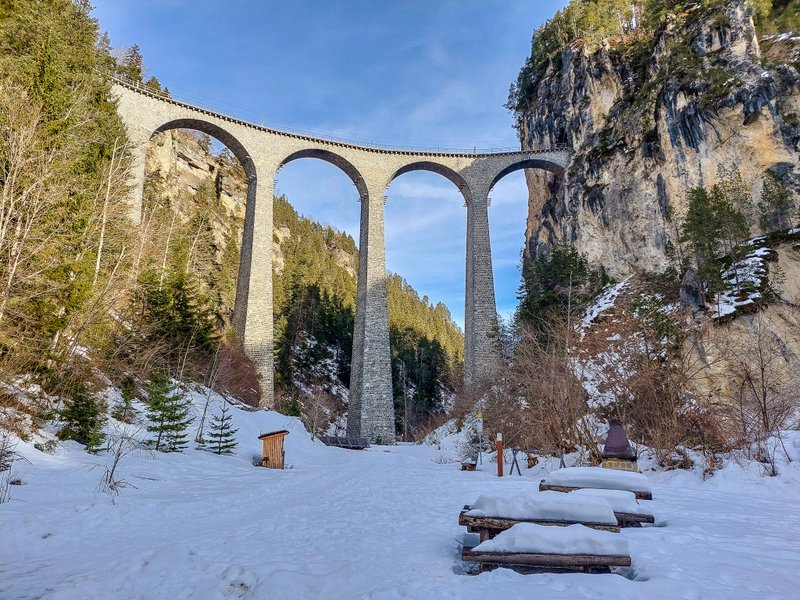
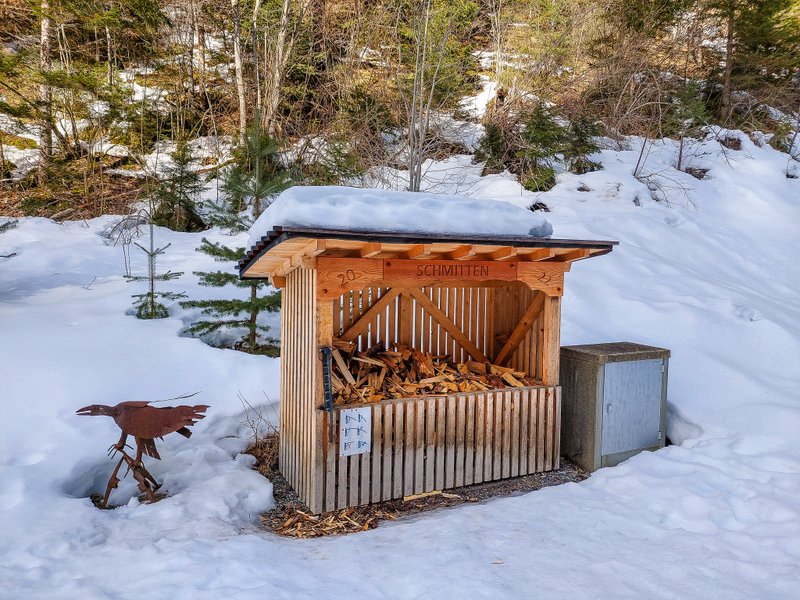
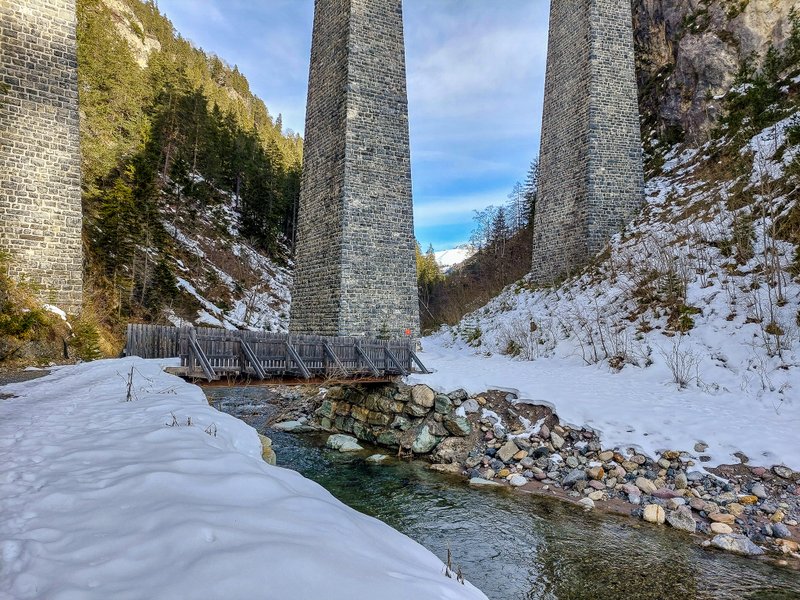
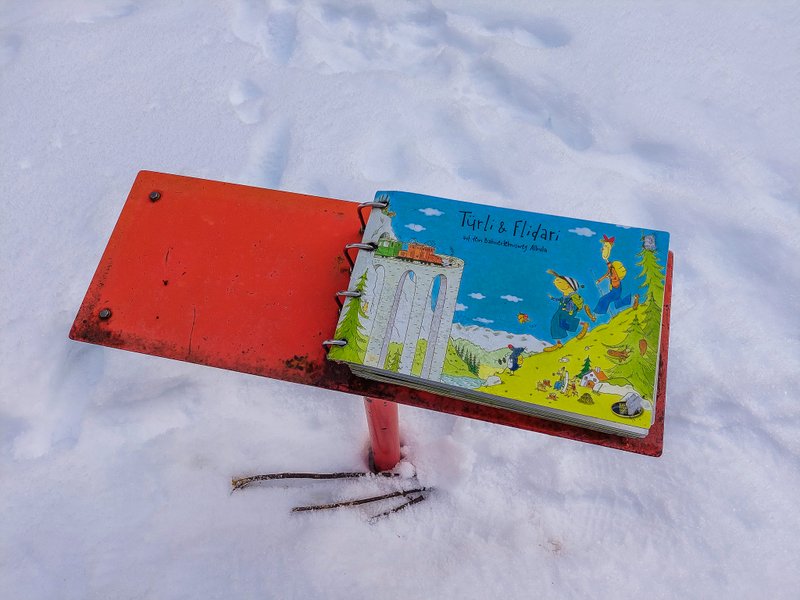
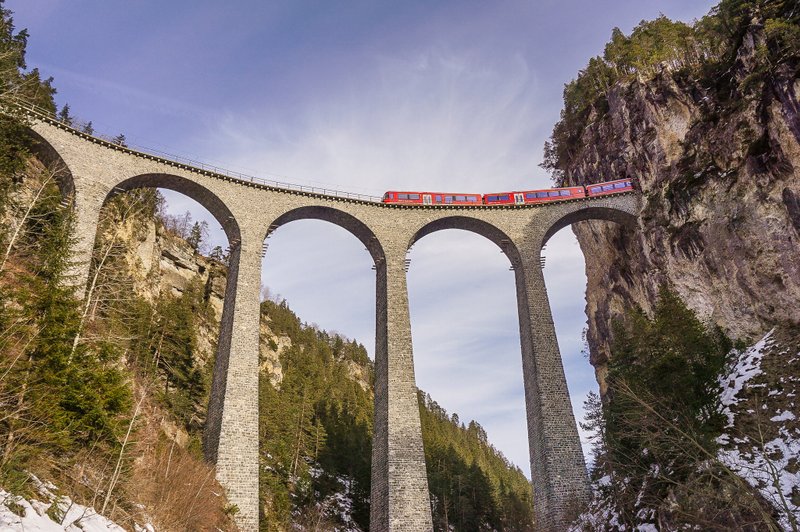
When do trains run on the Landwasserviadukt?
Trains pass over the viaduct once an hour. There are usually 2 trains every hour, one from each direction. And they follow each other within about 5 minutes. First, a train goes just before the whole in the direction of Filisur (i.e., into the tunnel – you will hear it whistle), then a few minutes later (about 3 minutes after the whole), a train comes out of the tunnel. Sometimes, a train may go in between, but those are more like freight trains. If you’re at the north/upper viewpoint, you have plenty of time to pack your photography gear and go down under the viaduct after the second train passes.
St. Moritz
Initially, the Landwasserviadukt was the goal of my trip, but then I decided that while I was here, an extra hour from Filisur to St. Moritz wouldn’t kill me. Because when else will I have the opportunity to get here again? St. Moritz is on a hillside, so you can take a local bus or walk uphill to the center. The town even has escalators that take you up to ease the hardship for its visitors. Here are just a few highlights of what St. Moritz is famous for:
- The Winter Olympics were held here twice (1928 and 1948).
- Mineral springs were discovered here 3000 years ago.
- The tower of the former church of St. Moritz leans even more than the leaning tower in Pisa.
- The “White Turf” is held here – a unique, exclusive, top-class event with exciting horse races on the frozen lake.
- It is the starting point of the famous Glacier Express panoramic train, and the Bernina Express passes through.
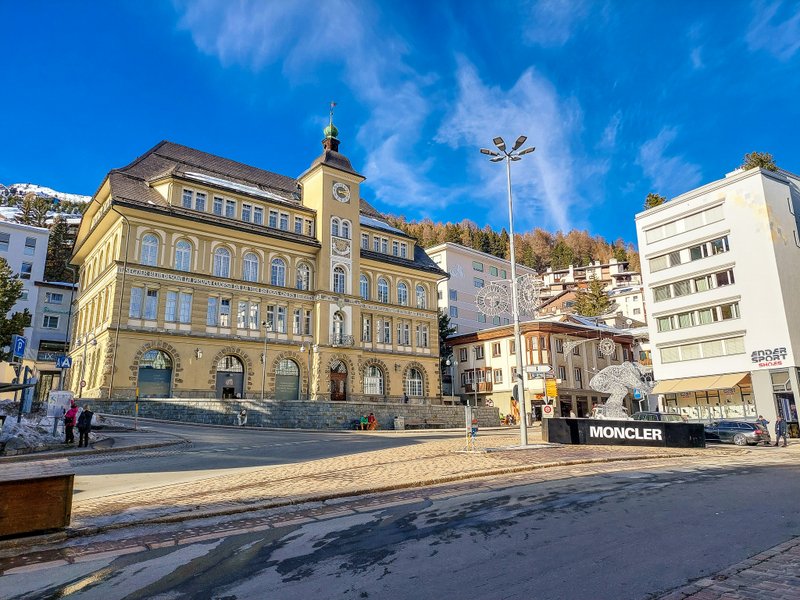
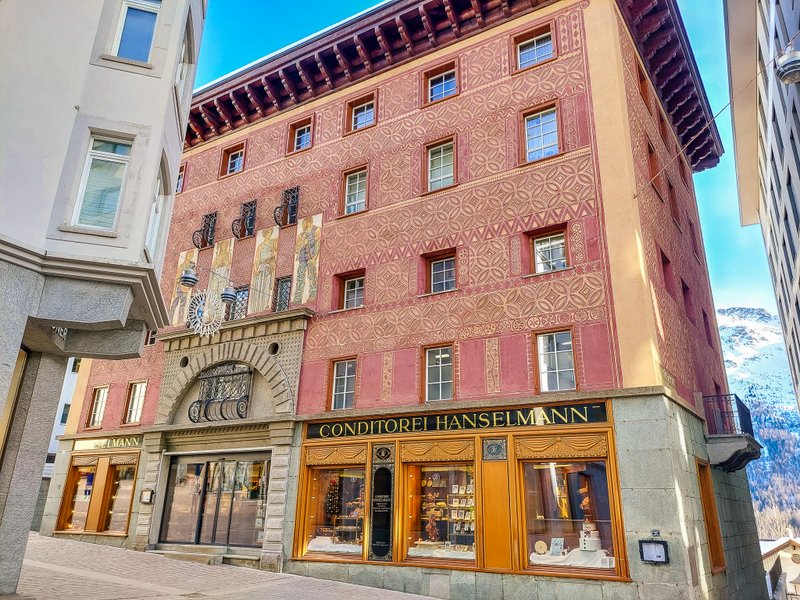
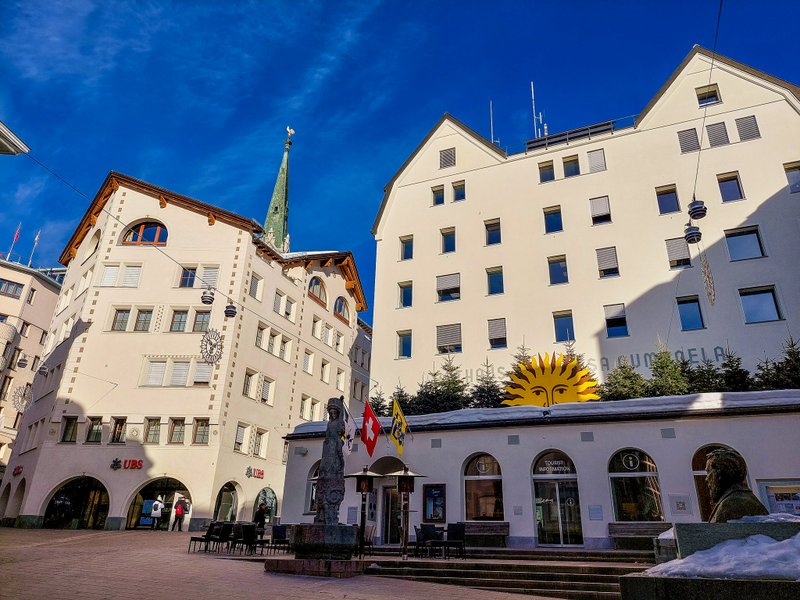
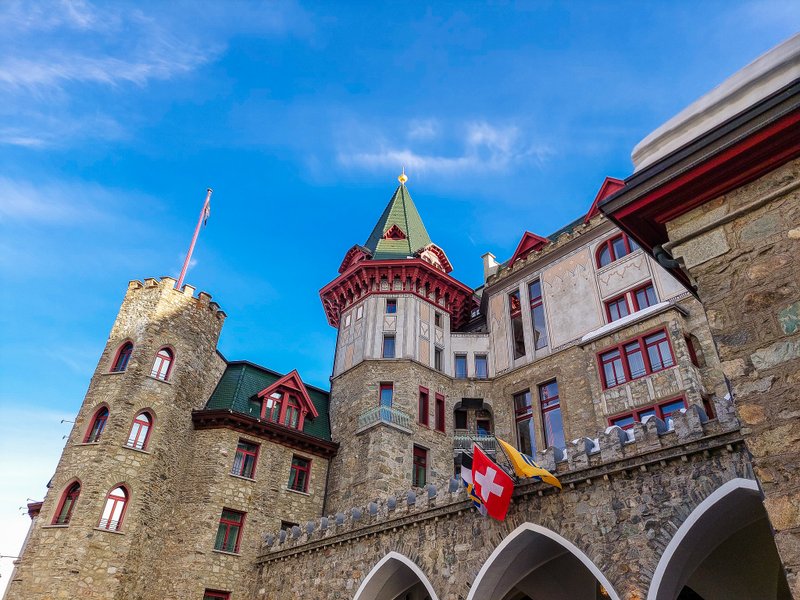
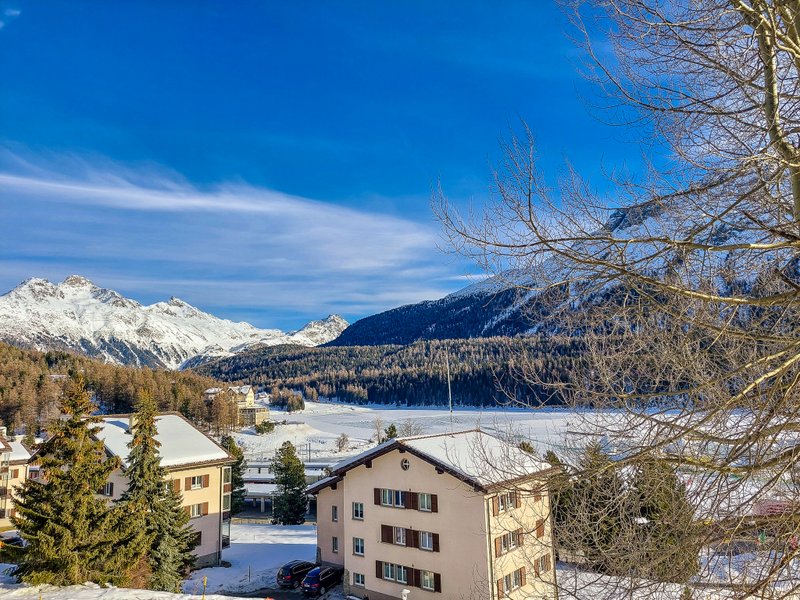
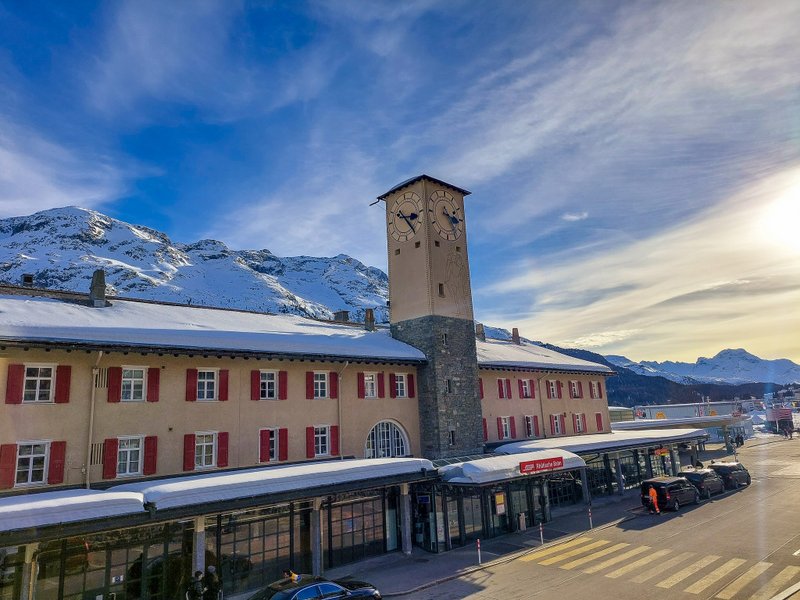
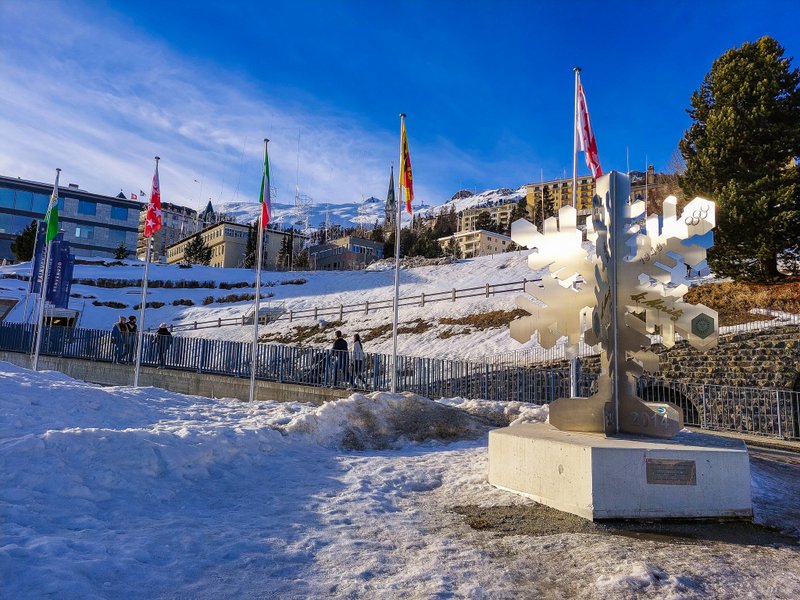
My tips:
- If you are heading from Chur to Filisur by train, it is best to sit on the right-hand side of the train for the best view of the Landwasserviadukt. From St. Moritz, sit on the left.
- I recommend visiting the northern viewpoint first – you’ll have the worst of it behind you 🙂 .
- After visiting St. Moritz, I returned to Chur, where I stayed in a former prison – now a hostel.
- For this trip, I used the Day Pass again and took the local services that run every hour on the Chur – St. Moritz line, giving you quite a bit of flexibility in traveling and exploring the area.
You might also like
